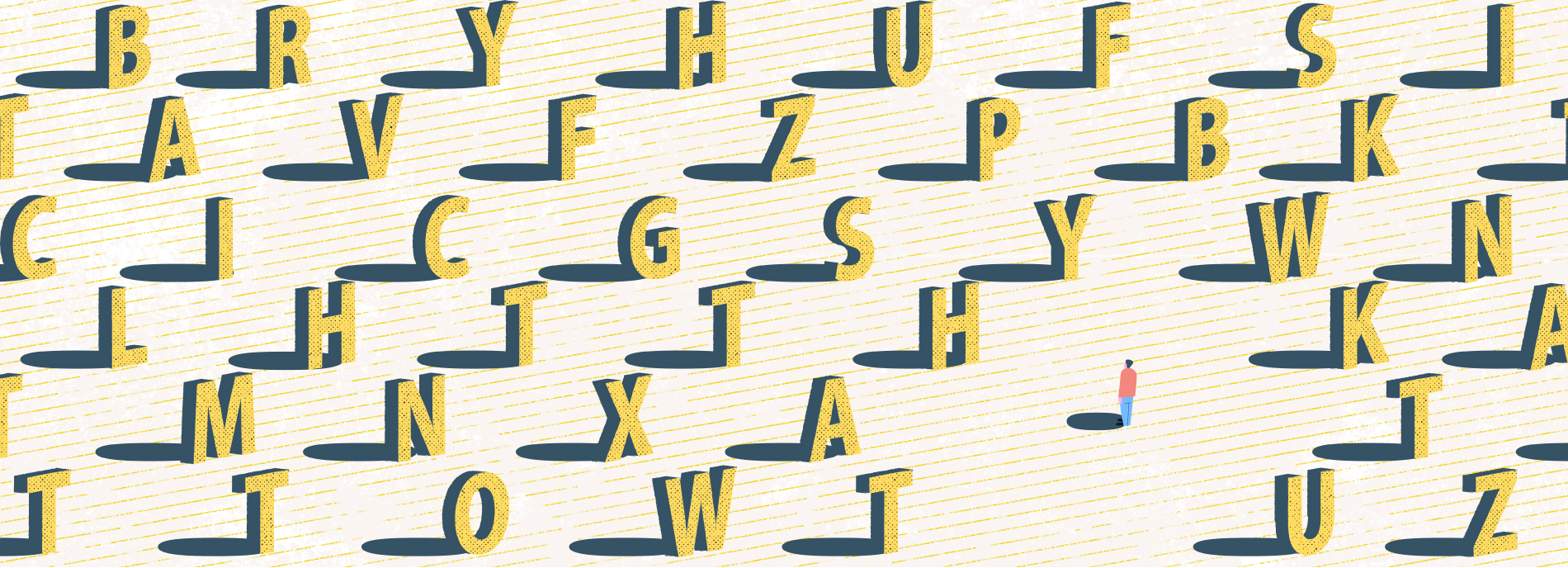A
ulton Grubbs sits in a chair against the wall of a small white room. A skinny teenager in athletic attire, he covers his eyes and ears with his hands while making a creaking noise with his vocal cords. The only word Aulton ever says, albeit sporadically, is “done.” Like roughly a quarter of people with autism, he struggles to communicate, which is why his mother has brought him to this two-story brick building in a leafy neighborhood in Austin, Texas.It is late February and this is Aulton’s third day working with educator Soma Mukhopadhyay, who glides into the room wearing an oversized tan work shirt atop an elegant red sari. Her diminutive frame and hushed, lilting voice belie her intensity. She makes a beeline toward Aulton, ignoring the adults in the room. “Today, you decide what should we do,” she says to Aulton as she holds up a plastic board with the alphabet on it in front of him. “‘S’ for ‘science’ or ‘P’ for ‘poetry.’”
She peels Aulton’s right hand from his face. He gingerly extends his pointer finger toward the board, gazing in a different direction. His finger lands on the ‘Q’ first and then the ‘P.’ “P, that’s right,” Mukhopadhyay says. She shifts the letter board to the right to bring the ‘O’ closer to his finger. “You’re right, you’re right,” she says. Prompted by Mukhopadhyay, Aulton pokes at the board again. “E … T … keep going, keep going,” she says, moving the board slightly to meet his fingers. She pries his hand from his face a second time and stops it from moving away from the board before Aulton presses it to the ‘R.’ Then he taps the ‘Y.’ “We’re going to do poetry,” she says.
Mukhopadhyay invented this technique, known as the ‘rapid prompting method,’ in the 1990s to help her autistic son Tito communicate. In 2004, she came to Austin to work with other autistic children, many of whom are minimally verbal, meaning they speak few or no words. Eventually, she began training other teachers in the method. Mukhopadhyay says she will work with children of any age and will assess their knowledge to determine what they need to be taught. She recommends that parents of young children expose them to the written word and prompt them frequently with questions, as she did with Tito starting at age 3.
Rapid prompting appears straightforward: A teacher holds up an alphabet board or a choice of two words on scraps of paper and then verbally or physically prompts an autistic person to point to individual letters or to words. The teacher might, for instance, tell the student that the sky is blue and then ask what color the sky is. Although teachers try to avoid moving the student’s hand directly, they may nudge an elbow or tap a shoulder.
A central assumption behind the method is that a student’s intellectual capacity rivals that of her neurotypical peers and that, despite her frequent lack of attention or response, she understands everything being communicated to her. In Mukhopadhyay’s view, autistic children are limited only by poor motor skills and the distraction caused by a sensory system in overdrive. Even nonspeaking children can learn to read and communicate if they spend enough time interacting with letters, she says.
Many parents spend 30 minutes or more a day practicing the method, and some attend regular sessions with providers in the hope that it will enable their child to one day type independently on a keyboard, as appeared to happen with Tito. His story was recounted by the BBC and 60 Minutes, and in the 2010 documentary “A Mother’s Courage: Talking Back to Autism,” narrated by actress Kate Winslet. Mukhopadhyay’s alumni also include Ido Kedar, a self-published author in California, and Michael Weinstein, now in his 20s, who won first place in chemistry in the Austin Regional Science Fair when he was in high school. More than 4.4 million YouTube visitors have watched a video that Apple released in 2016 that shows an autistic teenager prompted by his therapist to use an iPad to communicate.
Despite rapid prompting’s popularity, no rigorous scientific studies show that the method works. There is no empirical support for the idea that it spurs academic progress or that its students express their own thoughts. In a 2019 review of the literature, researchers identified six descriptive studies, but none compared the method with a control group, a hallmark of any genuine trial. “You are not only not letting the person speak for themselves, but you are overlaying your own voice on theirs,” says Ralf Schlosser, an expert in augmentative and alternative communication at Northeastern University in Boston, Massachusetts, who led the study. He makes his opinion clear: “That is a human rights violation.”
But the lack of proof has not dissuaded many parents. Mukhopadhyay conducts up to 11 sessions a day and holds workshops around the world several times a year. In Austin, she sees her clients at the offices of a nonprofit called Helping Autism through Learning and Outreach (HALO), founded for her programs in 2002. Four-day HALO camps cost $850, and training sessions for parents and providers are $950. HALO sells Mukhopadhyay’s books and a variety of letter boards. It also has lent its trademarked seal of approval to 10 independent providers in the United States, the United Kingdom and Mexico. Mukhopadhyay draws a salary of more than $150,000 per year, according to tax filings. And HALO has competitors, such as the Growing Kids Therapy Center in Herndon, Virginia, which provides training called Spelling to Communicate that also focuses on motor skills and encourages autistic people to use a letter board to communicate.
Parents have also tried to introduce the method into U.S. special-education classrooms. According to a 2018 study, 17 percent of 535 special educators surveyed in Tennessee used the rapid prompting method with their students every day — a frequency on par with their use of such evidence-based practices as pivotal response treatment and the picture-exchange communication system. Insurance does not cover the rapid prompting method, and school districts often reject its use in the classroom, so parents sometimes raise thousands of dollars through GoFundMe or other online campaigns to travel to training sessions run by Mukhopadhyay or other instructors.
For parents, rapid prompting has particular appeal. It holds out the promise that their children are far more intellectually capable than clinicians may have suggested. “The parents are just as much a victim,” says Jennifer Hamrick, a special-education expert at Texas Tech University in Lubbock.
Aulton and his mother have attended private rapid prompting method sessions with certified providers near their home in Tucson, Arizona, for three years. The two spend three hours a day working with the letter board at home, and at his private school, the Arizona Aspire Academy, teachers also use the method. Traveling to Austin for a HALO camp provided Aulton with his first chance to work directly with Mukhopadhyay. His mother, Nikki Grubbs, says, “It really doesn’t matter to me that it’s not evidence-based or scientific, because I see the evidence in him.”









